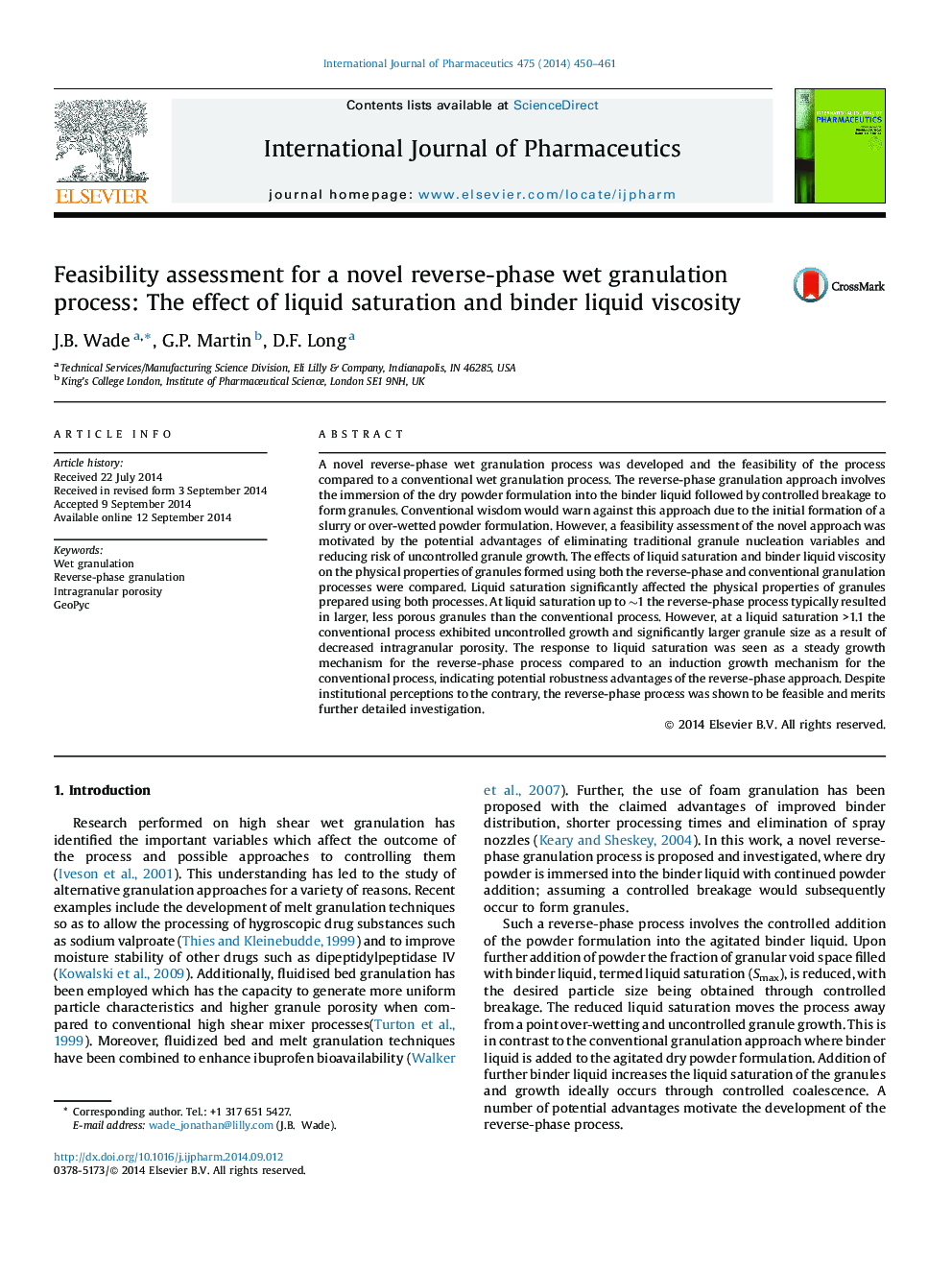| Article ID | Journal | Published Year | Pages | File Type |
|---|---|---|---|---|
| 2501657 | International Journal of Pharmaceutics | 2014 | 12 Pages |
A novel reverse-phase wet granulation process was developed and the feasibility of the process compared to a conventional wet granulation process. The reverse-phase granulation approach involves the immersion of the dry powder formulation into the binder liquid followed by controlled breakage to form granules. Conventional wisdom would warn against this approach due to the initial formation of a slurry or over-wetted powder formulation. However, a feasibility assessment of the novel approach was motivated by the potential advantages of eliminating traditional granule nucleation variables and reducing risk of uncontrolled granule growth. The effects of liquid saturation and binder liquid viscosity on the physical properties of granules formed using both the reverse-phase and conventional granulation processes were compared. Liquid saturation significantly affected the physical properties of granules prepared using both processes. At liquid saturation up to ∼1 the reverse-phase process typically resulted in larger, less porous granules than the conventional process. However, at a liquid saturation >1.1 the conventional process exhibited uncontrolled growth and significantly larger granule size as a result of decreased intragranular porosity. The response to liquid saturation was seen as a steady growth mechanism for the reverse-phase process compared to an induction growth mechanism for the conventional process, indicating potential robustness advantages of the reverse-phase approach. Despite institutional perceptions to the contrary, the reverse-phase process was shown to be feasible and merits further detailed investigation.
Graphical abstractFigure optionsDownload full-size imageDownload high-quality image (156 K)Download as PowerPoint slide
